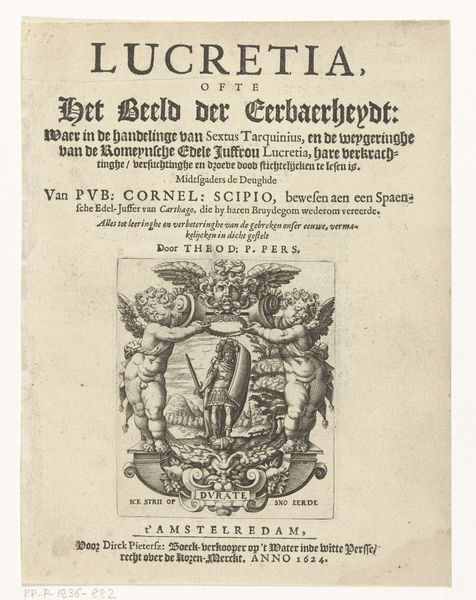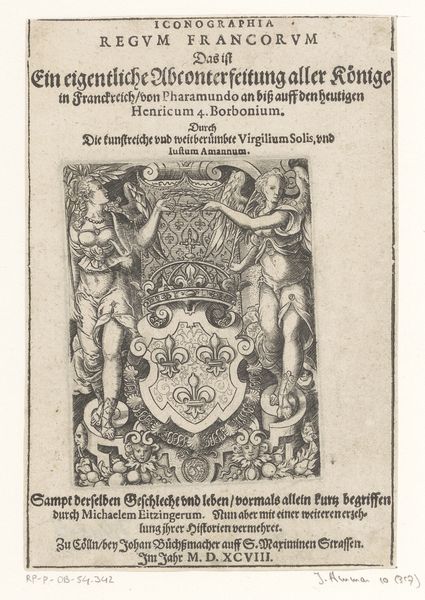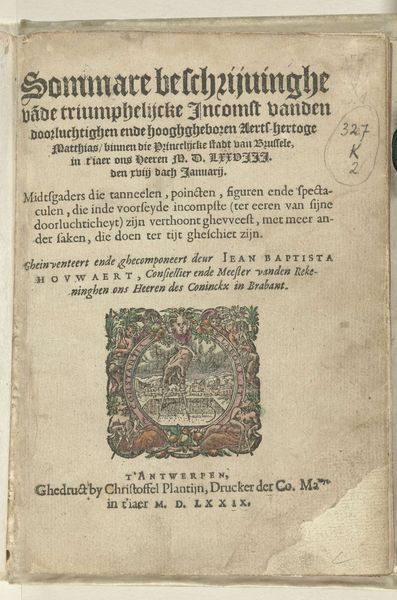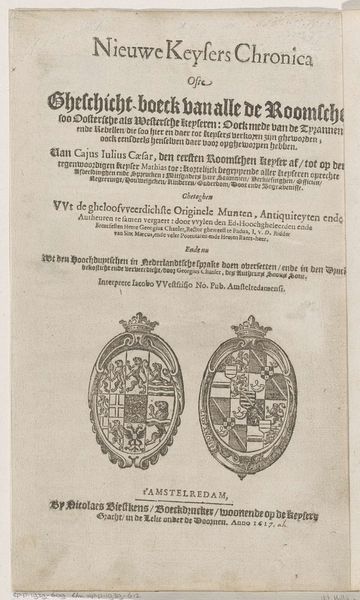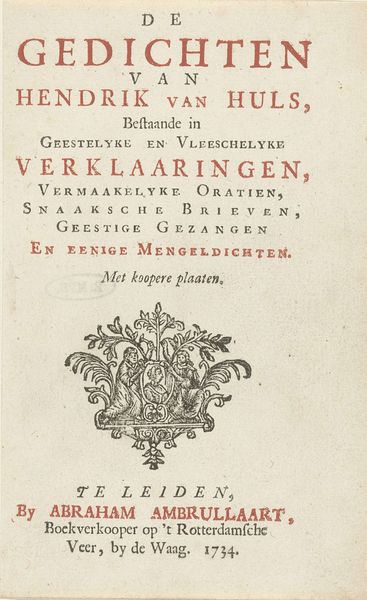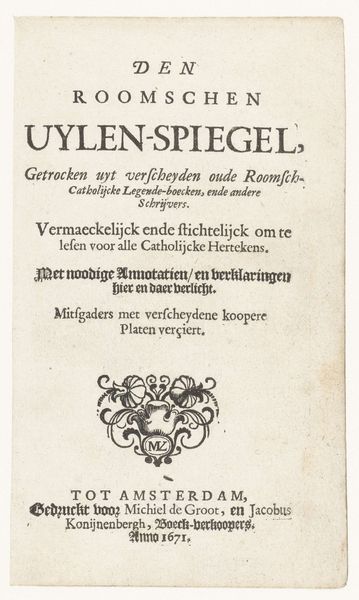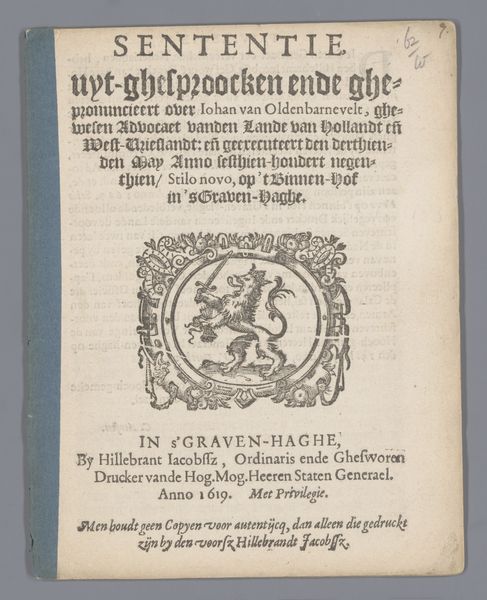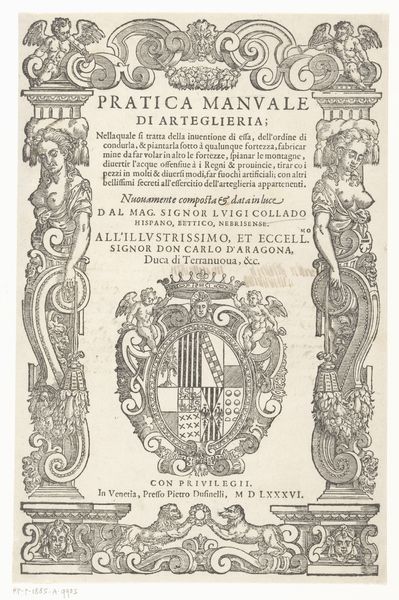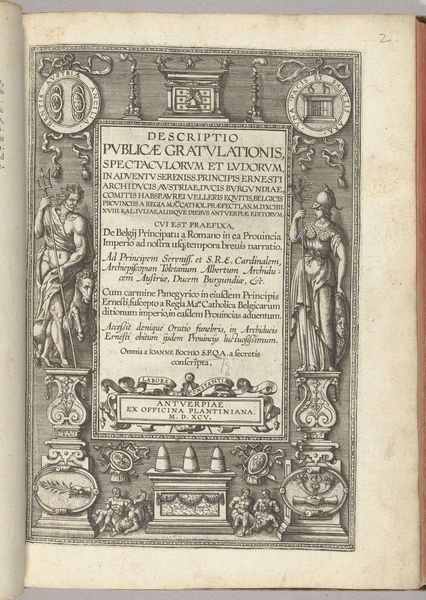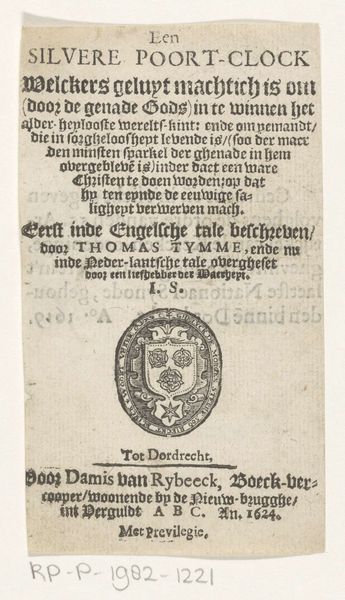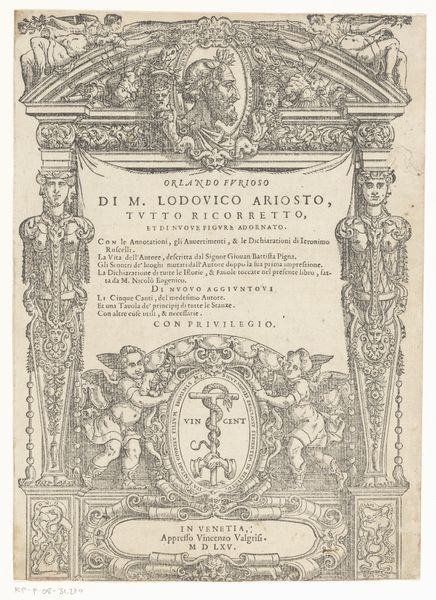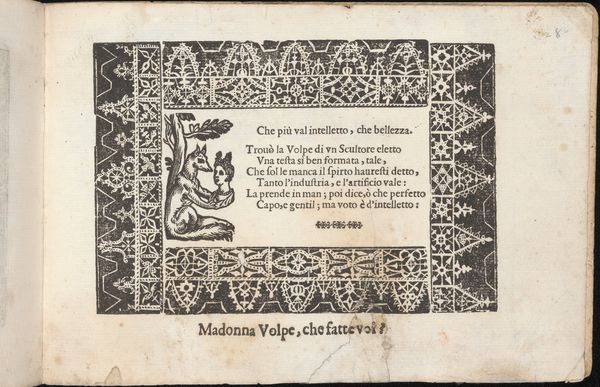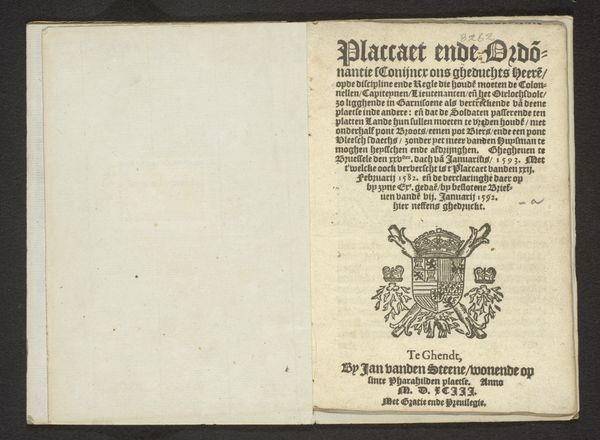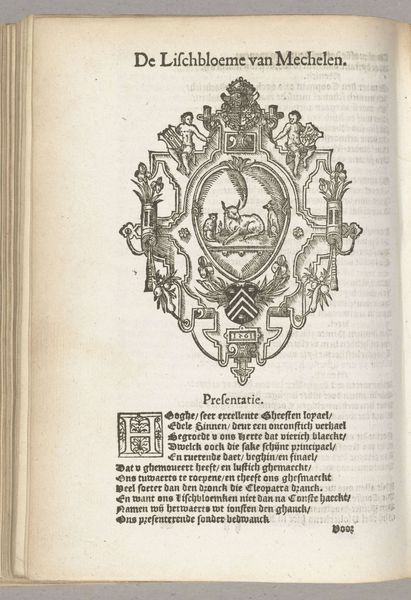
graphic-art, print, engraving
#
graphic-art
# print
#
old engraving style
#
geometric
#
history-painting
#
engraving
Dimensions: height 200 mm, width 111 mm, height 73 mm, width 77 mm
Copyright: Rijks Museum: Open Domain
This engraving, created in 1610 by Willem van Swanenburg, presents the coat of arms of Count William II of Holland. Dominating the image is the double-headed eagle, crowned, bearing a shield with a lion, symbols resonant with power, authority, and divine right within the Holy Roman Empire. The double-headed eagle, a motif inherited from ancient Near Eastern empires and later adopted by the Roman and Byzantine emperors, signifies dominion over both East and West. We see echoes of this symbol throughout history, reappearing in various forms in different cultures, each time adapted to new political and ideological contexts. Its presence here speaks to the deep-seated human desire for order and control, a primal urge reflected in the iconography of rulers throughout the ages. Observe how the crowned lion on the shield, a heraldic symbol of courage and nobility, further amplifies this sense of power. This assemblage of symbols creates a potent image, engaging viewers on a subconscious level, evoking feelings of awe and respect. The eagle, lion, and crown, these symbols do not progress linearly; they resurface, evolve, and take on new meanings, perpetually weaving through the fabric of cultural memory.
Comments
No comments
Be the first to comment and join the conversation on the ultimate creative platform.
